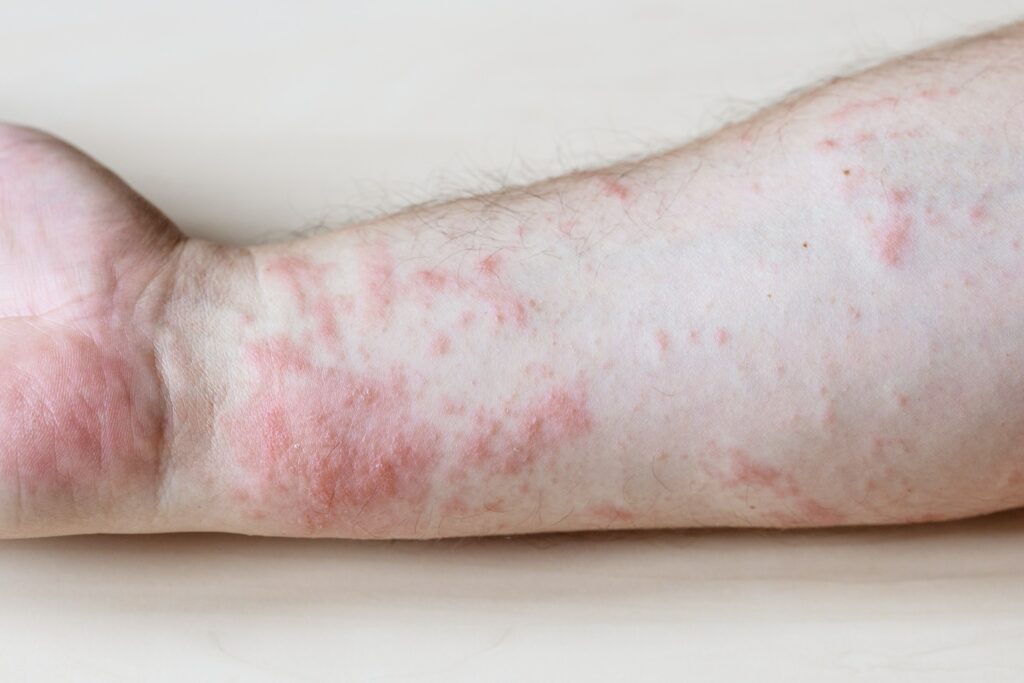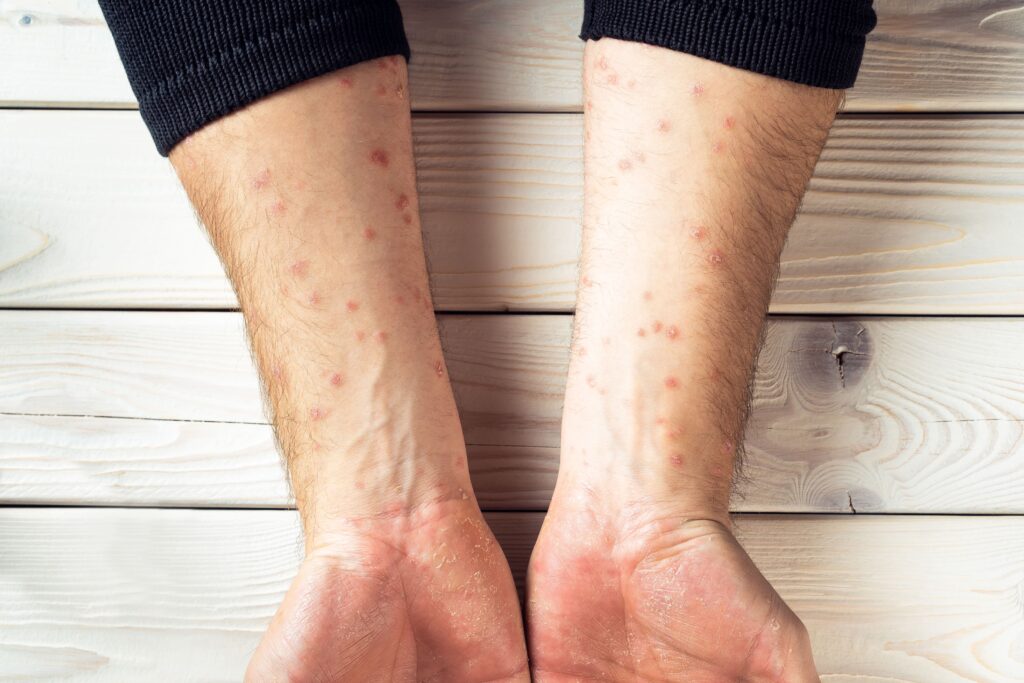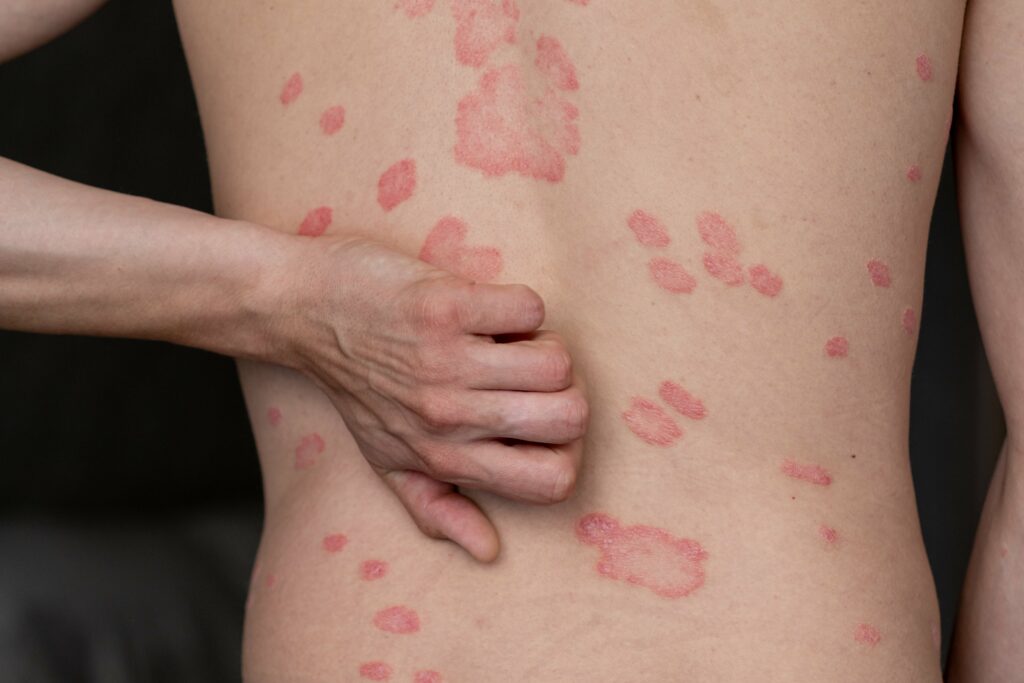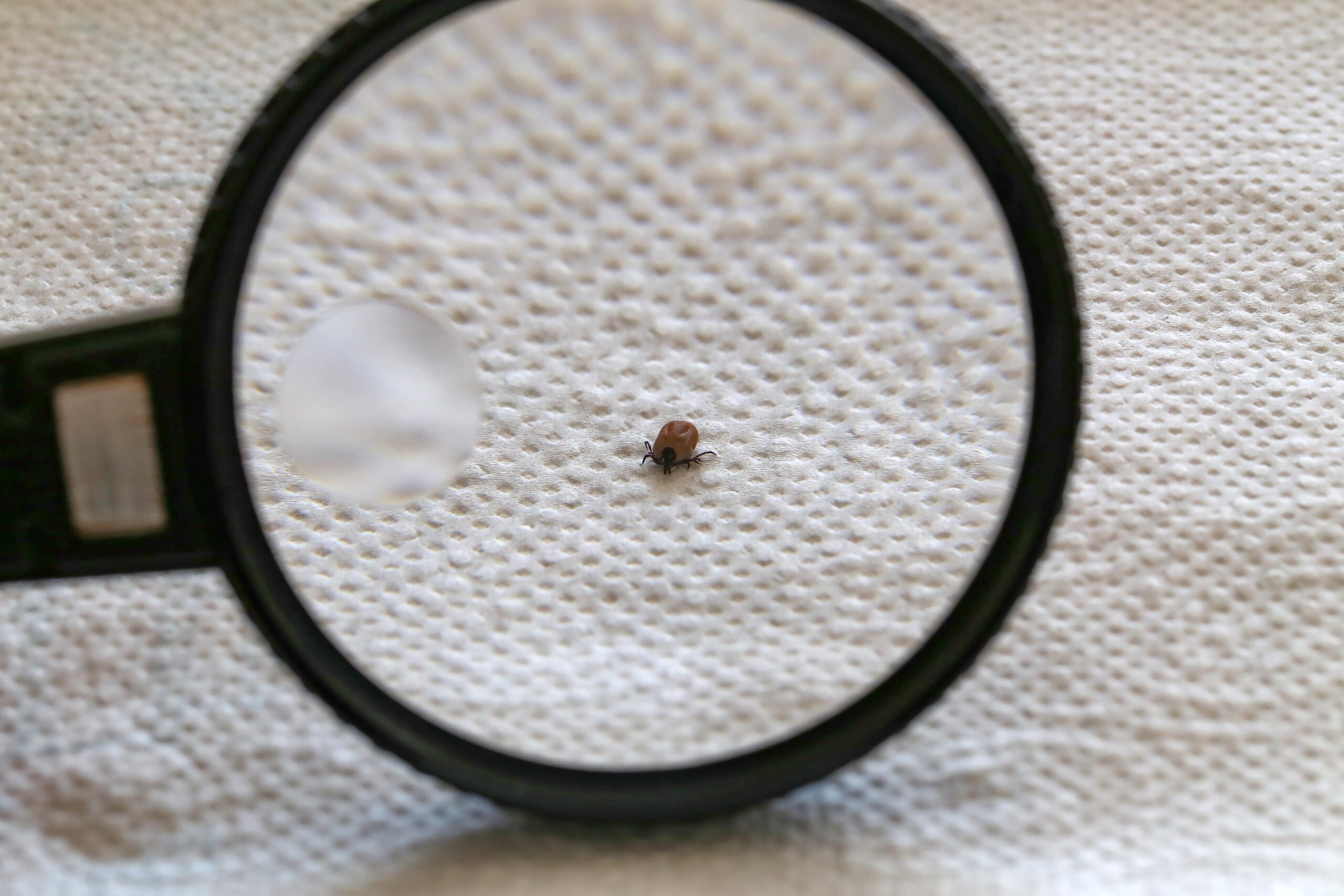Fleas, those tiny, pesky insects that thrive on the blood of animals, are not just a nuisance causing severe itching and discomfort. These minuscule creatures also have a dark side—they can serve as carriers for various diseases.
Fleas belong to the order Siphonaptera and are notorious for transmitting pathogenic organisms such as bacteria and parasites to humans and animals alike. Their ability to transmit diseases makes them formidable vectors in the world of medical entomology.
Fleas have been implicated in the transmission of several significant diseases throughout history. The most notorious example is the bubonic plague, which ravaged Europe during the Middle Ages.
It was rat fleas (Xenopsylla cheopis) that acted as intermediaries between infected rats and humans, transmitting Yersinia pestis bacteria through their bites. Today, fleas continue to play a role in spreading diseases such as murine typhus, bartonellosis (also known as cat scratch disease), tularemia (commonly known as rabbit fever), and more.
Importance of understanding and preventing flea-borne diseases

As we delve deeper into the functional and evolutionary ecology of these insects, it becomes evident why understanding flea-borne diseases is crucial for both human health and animal welfare. The transmission cycle typically begins when an infected animal hosts fleas that carry pathogens within their bodies. When these fleas take a blood meal from dead animals or another host (be it human or animal), they inject these pathogens into their victims through their saliva or feces.
By comprehending how these tiny arthropods transmit diseases, we can take preventive measures to minimize human infestation and potential outbreaks. This includes practicing good hygiene by regularly washing ourselves and our pets, maintaining a clean living environment, and employing effective flea control methods.
Additionally, seeking prompt medical attention upon experiencing symptoms associated with flea-borne diseases is vital for timely diagnosis and treatment. The impact of flea-borne diseases should not be underestimated.
The bubonic plague alone caused millions of human deaths in its heyday, and while it may seem like a relic of human disease from the past, cases still occur today. Other afflictions such as murine typhus can lead to fever, body aches, and severe fatigue if left untreated.
Cat scratch disease can result in swollen lymph nodes and general malaise. Tularemia can cause various symptoms such as fever, headache, muscle pain, and even pneumonia or sepsis in severe cases.
Understanding the role of fleas as disease vectors is crucial in mitigating the risks associated to human infection with flea-borne diseases. By educating ourselves about their biology and their potential to transmit pathogens to humans through their bites or infested hosts, we can take necessary precautions to protect ourselves and our beloved pets from these pernicious creatures.
Stay vigilant against fleas by consulting with veterinary clinics for appropriate preventive measures such as topical or oral medications for your furry friends. Together we can prevent the spread of these dreaded flea diseases that have plagued humanity throughout history.
The Plague: A Historical and Ongoing Threat

A Devastating History of the Bubonic Plague
The bubonic plague, commonly known as the Black Death, holds a haunting place in history. Its relentless spread during the 14th century wiped out millions across Europe, leaving death and despair in its wake.
This deadly disease was caused by the Yersinia pestis bacterium, which found an unwitting carrier in the form of fleas. As we delve into the fascinating world of flea-borne diseases, it is impossible to overlook the dramatic impact that the bubonic plague had on civilizations throughout history.
Fleas: Unwitting Transmitters of Yersinia Pestis
While rats have often been blamed for spreading the plague, it is actually their parasitic companions that play a significant role in transmitting Yersinia pestis bacteria. The rat flea (Xenopsylla cheopis) was responsible for propagating this devastating pathogen from infected rats to humans. These tiny insects would eagerly bite an infected rat and ingest blood teeming with bacteria.
As they moved on to new hosts, typically humans, they regurgitated contaminated fecal pellets into open wounds or directly into the bloodstream through flea bites. This highly efficient mode of transmission allowed Yersinia pestis to rapidly infiltrate human populations.
The Plague Today: Current Cases and Regions Affected
While it may seem like a relic from distant history, cases of the plague still persist today in various parts of the world. According to recent reports from health organizations worldwide, countries such as Uganda, Peru, and Madagascar continue to face sporadic outbreaks of this deadly disease.
The endemic typhus is primarily transmitted by fleas harbored by small mammals like rodents or rabbits. In these regions where hygiene conditions may be challenging, the prevalence of infected fleas poses a constant threat to both wild and domestic animals and human populations.
A Cautionary Tale: The Impact of Flea-Borne Diseases
The devastating consequences of flea-borne diseases extend far beyond the physical toll they take on individuals. During outbreaks, panic and fear grip communities, leading to disrupted economies and strained social structures. Furthermore, the pneumonic plague, a more contagious form of the disease transmitted through respiratory droplets, can quickly escalate into epidemics if not promptly contained.
Secondary infections resulting from flea bites or scratches from infected cat fleas can exacerbate the severity of these illnesses. Understanding the role fleas play in transmitting pathogens is crucial for implementing effective prevention strategies and mitigating the impact of such outbreaks.
Intriguing Discoveries: Functional and Evolutionary Ecology
Research into flea-borne diseases has not only shed light on their historical significance but also provided insights into the functional and evolutionary ecology between fleas, pathogens, and their hosts. Scientists have delved deeper into understanding how adult fleas transmit diseases to humans through biting behavior. By studying infected fleas under controlled conditions, they have unraveled specific pathways that pathogens take within these tiny arthropods during various stages of flea development.
Such revelations aid in devising novel approaches to tackle these diseases at their source – by disrupting pathogen transmission within flea populations. Join us as we explore more intriguing tales about common diseases transmitted by fleas in our next section: “Murine Typhus: More Common Than You Think.”
Murine Typhus: More Common Than You Think

Introduction to murine typhus and its symptoms
When it comes to common diseases transmitted by fleas, murine typhus is often underestimated. This under-the-radar illness is caused by the bacteria Rickettsia typhi, which is primarily transmitted through the bites of infected fleas.
Murine typhus may not be as infamous as the plague, but it can still cause significant health issues if left untreated. The symptoms of murine typhus can vary from person to person, but they typically include fever, headache, body aches, and a rash that starts on the trunk and spreads.
These symptoms usually appear within 1-2 weeks after a flea bite and can persist for several weeks if infected animal tissues are not properly diagnosed and treated. It’s important to note that murine typhus might be misdiagnosed or mistaken for other illnesses due to its nonspecific symptoms.
Flea species responsible for transmitting Rickettsia typhi bacteria
While various fleas can transmit diseases, in the case of murine typhus, it is primarily associated with the oriental rat flea (Xenopsylla cheopis). This particular species of flea is commonly found on rats and other small mammals such as mice.
When these fleas feed on infected animals, they acquire Rickettsia typhi bacteria which then multiply within their bodies. Subsequently, when an infected flea bites a human host, it transmits the bacteria into their bloodstream.
It’s important to note that humans are accidental hosts for these fleas since their preferred hosts are rodents like rats or mice. However, if humans come into contact with areas inhabited by infected rodents or their fleas—such as in environments with poor sanitation or close proximity to feral cats—it increases the likelihood of transmission.
Global distribution and prevalence of murine typhus
Contrary to popular belief, murine typhus is not confined to only certain regions or countries. It has a global distribution and can be found in various parts of the world.
However, its prevalence tends to be higher in areas with warmer climates, such as tropical and subtropical regions, where fleas thrive due to favorable conditions. Regions like Southeast Asia, South America, Africa, and parts of the United States have reported cases of murine typhus.
In recent years, there has been an increase in reported cases in urban areas due to factors such as increased urbanization, population growth, and changes in flea development ecosystems. To prevent murine typhus and other flea-borne diseases, it is crucial to maintain good hygiene practices and keep environments free from potential flea habitats.
Pet owners should regularly treat their animals for fleas using appropriate methods recommended by veterinarians. By understanding the risks associated with fleas and taking preventive measures, we can reduce the incidence of murine typhus and ensure better overall health for ourselves and our communities.
The Silent Intruder: Bartonellosis

Understanding Bartonella Bacteria and its Impact on Human Health
Bartonellosis, also known as cat scratch disease or cat scratch fever, is caused by a group of bacteria called Bartonella. These sneaky little bacteria enter the human body through the bite wound from an infected flea, often found on cats and dogs.
Once inside, they can cause a range of symptoms that vary in severity. The impact of Bartonella bacteria on human health can be quite significant.
While some infected individuals may only experience mild symptoms such as swollen lymph nodes near the site of the bite or flu-like symptoms, others may develop more severe complications. These can include high fever, fatigue, muscle pain, and even inflammation of the heart or brain.
Fleas as Carriers of Bartonella henselae and Bartonella quintana
Fleas play a crucial role in transmitting Bartonella infections to humans. Two species specifically associated with this transmission are the cat flea (Ctenocephalides felis) and the human flea (Pulex irritans).
These fleas serve as vectors for transmitting two main types of Bartonella: Bartonella henselae and Bartonella quintana. Both these bacteria are adept at surviving within fleas, allowing them to persistently infect these tiny blood-sucking insects.
When an infected flea bites a human or animal host for its blood meal, it transmits these disease agents into their bloodstream. This makes fleas not only annoying pests but also dangerous carriers capable of spreading bartonellosis.
Unveiling the Connection Between Bartonellosis, Cat Scratches, and Fleas
One intriguing aspect of bartonellosis is its association with cat scratches. Although fleas are primarily responsible for transmitting the disease, cats play a role in the transmission cycle.
Infected fleas usually reside on cats and transfer the bacteria to them through flea bites. When an infected flea feces a cat scratches a human, it can introduce Bartonella bacteria into the person’s bloodstream, leading to cat scratch disease.
However, it’s important to note that not all cats carrying Bartonella will show symptoms of infection. In fact, many infected cats may be completely asymptomatic carriers.
So even if your feline friend appears healthy and doesn’t display any signs of illness, they might still harbor these bacteria and pose a potential risk. Bartonellosis is a subtle yet concerning infection transmitted by fleas.
Understanding the impact of Bartonella bacteria on human health is crucial for diagnosis and treatment. Fleas serve as carriers for Bartonella henselae and Bartonella quintana, making them key players in spreading bartonellosis infections.
Moreover, the connection between cat scratches and bartonellosis highlights the importance of practicing good flea control measures to protect both ourselves and our furry companions from this silent intruder. Note: It is always recommended to consult with medical professionals or veterinarians for accurate diagnosis and treatment options related to specific health concerns or conditions mentioned in this article.
Tularemia: The Rabbit Fever
The Elusive Francisella tularensis Bacteria
Tularemia, also known as the Rabbit Fever, is caused by the cunning Francisella tularensis bacteria. This highly infectious microorganism is found in various wild animals such as rabbits, rodents, and even ticks.
It can also be transmitted to humans through fleas that have fed on these infected animals. While relatively rare, tularemia poses a significant threat to those who come into contact with contaminated fleas or animal carcasses.
Fleas: The Silent Carriers
When a flea feeds on an infected animal, such as a rabbit or rodent carrying Francisella tularensis bacteria, these microscopic pathogens make their way into the flea’s gut. As these parasites continue feeding and reproducing, the bacteria multiply within their bodies. When an unsuspecting human gets bitten by an infected flea, the bacteria are transferred through saliva into the person’s bloodstream.
It’s worth noting that humans can contract tularemia not only from fleas but also through direct contact with infected animals or even contaminated soil and water. However, fleas play a significant role in transmitting this disease efficiently due to their feeding habits and ability to move from one host to another.
Recognizing Tularemia Symptoms and Seeking Treatment
The symptoms of tularemia may vary depending on how it was contracted—the most common form being ulceroglandular tularemia. Initially resembling a regular flu-like illness with fever, chills, fatigue, and muscle aches, symptoms may progress to include skin ulcers at the site of infection and swollen lymph nodes near the bite area.
If left untreated or misdiagnosed due to its similarity with other ailments like Lyme disease or strep throat, tularemia can have severe consequences. In rare cases, it can even lead to pneumonia, meningitis, or sepsis.
Therefore, it is crucial to seek medical attention promptly if you suspect tularemia. Treatment for tularemia typically involves a course of antibiotics prescribed by a healthcare professional.
Antibiotics such as streptomycin or gentamicin are commonly used to combat the infection effectively. It is essential to complete the entire prescribed course of medication to ensure the bacteria are fully eradicated from your system.
Prevention Strategies: Staying One Step Ahead
Preventing tularemia primarily revolves around avoiding contact with infected animals and their habitats. Be cautious when handling wild animals, carcasses, or even domestic dogs and cats that may have come into contact with these creatures. Wearing gloves and protective clothing while working in areas where tularemia may be present, such as forests or grasslands, can significantly reduce the risk of exposure.
Additionally, taking measures to protect yourself from flea bites tripled your defense against tularemia transmission. Use insect repellents containing DEET on exposed skin and treat your pets regularly with veterinarian-approved flea control products to minimize the chances of fleas carrying this disease into your home.
By understanding the biology of tularemia and implementing preventive measures, you can safeguard yourself and your loved ones from this insidious rabbit fever. Stay vigilant when venturing into nature’s realm and remember that fleas are not just pesky nuisances—they can also be carriers of dangerous diseases like tularemia.
Cat Scratch Disease: More Than Just Scratches

Brief Introduction to Cat Scratch Disease (CSD)
Cat Scratch Disease (CSD) is a bacterial infection caused by Bartonella henselae, a microorganism that is primarily transmitted to humans through the bite or scratch of an infected cat. Contrary to its name, CSD doesn’t necessarily require a deep scratch to occur; even a minor skin abrasion can provide an entry point for the bacteria. While cats are the primary reservoir for Bartonella henselae, fleas play a crucial role in transmitting the bacteria from infected cats to humans.
Role of Fleas in Transmitting Bartonella Henselae Bacteria
Fleas, particularly the cat flea species (Ctenocephalides felis), act as intermediate hosts for Bartonella henselae. When fleas bite an infected cat, they ingest blood containing the bacteria.
Inside the flea’s digestive system, these bacteria multiply and eventually migrate to the hindgut and salivary glands of adult fleas. Once infected, female fleas can transmit Bartonella henselae to their offspring during egg-laying.
When an uninfected flea bites another host species of cat or human after acquiring Bartonella henselae from an infected animal host, it injects some of these bacteria into the new host with its saliva. Consequently, if you experience a flea bite from an infected cat flea carrying Bartonella henselae, you are at risk of developing Cat Scratch Disease.
Common Symptoms, Diagnosis, and Prevention Methods for CSD
The symptoms of Cat Scratch Disease vary and can appear within 1-2 weeks after exposure. They typically include redness and swelling at the site of injury (such as a scratch or bite), followed by enlargement of nearby lymph nodes. These swollen lymph nodes are usually tender and may persist for several weeks or even months.
In some cases, individuals may experience muscle aches, fatigue, fever, and headaches. To diagnose Cat Scratch Disease, doctors often rely on clinical symptoms as well as laboratory tests.
Blood tests can detect antibodies against Bartonella henselae in the body, confirming exposure to the bacteria. In more severe cases or when complications are suspected, additional tests like lymph node biopsy might be necessary.
Preventing Cat Scratch Disease starts with taking measures to reduce flea populations in both cats and their environment. Regular grooming and the use of appropriate flea control products for pets can help minimize the risk of flea bites carrying Bartonella henselae.
Additionally, practicing good hygiene by washing hands after handling cats, especially if any scratches or bites occur, is essential. While a cat bite or scratches might seem innocent enough, they can potentially lead to Cat Scratch Disease (CSD).
Fleas act as intermediaries between infected cats and humans by transmitting Bartonella henselae bacteria through their bites. Recognizing common symptoms such as swollen lymph nodes is crucial in seeking appropriate medical attention.
By implementing preventive measures to control fleas and promoting good pet hygiene practices, the risk of contracting CSD can be significantly reduced.
Tungiasis: When Sand Fleas Attack
Uncovering the World of Sand Fleas (Tunga penetrans)
Sand fleas, those tiny but mighty creatures, can cause quite a stir when it comes to human health. Tungiasis, caused by the penetration of female sand fleas (Tunga penetrans) into the skin, is a parasitic disease that primarily affects people living in tropical and subtropical regions. These sneaky little insects lurk in sandy environments like beaches or muddy areas, waiting for an opportunity to latch onto unsuspecting victims.
Once embedded, they begin their unsettling journey of feeding on host tissues. The life cycle of sand fleas starts with fertilized female fleas burrowing into human skin, usually targeting feet or toes.
They create a small hole through which they deposit their eggs and stay there while their offspring grow. The presence of these tiny parasites can lead to severe itching, inflammation, and discomfort for the affected individuals.
Transmission
While Tungiasis is more commonly found in economically disadvantaged communities with limited access to adequate sanitation and healthcare facilities, it is important to note that anyone spending time in infested areas can be at risk. This includes tourists visiting tropical destinations where sand fleas thrive. The transmission of Tungiasis occurs when humans come into contact with soil or surfaces contaminated with infected flea eggs or larvae.
Walking barefoot on infested ground or using contaminated tools such as gardening equipment can lead to exposure and subsequent infection. Furthermore, there is evidence that domestic animals like dogs and cats may also carry the sand flea larvae into human living spaces.
Conclusion
Although the threat posed by Tungiasis may seem alarming due to its association with sand-dwelling creatures like Tunga penetrans, it is crucial not to let fear overshadow the enjoyment of outdoor activities. By taking simple precautions like wearing shoes in infested areas and maintaining good hygiene practices, the risk of contracting fleaborne diseases can be significantly reduced.
So, let’s go out and explore the world, knowing that with a little knowledge and awareness, we can keep these tiny pests at bay. Stay informed, stay protected, and enjoy your adventures to the fullest!
Exterminate fleas with D-Termination: The leading pest control service in Las Vegas!

If you’re facing flea issues on your Las Vegas property, trust D-Termination for assistance. Our expert team excels in eliminating flea infestations and restoring comfort and peace to your space. Bid farewell to fleas—opt for D-Termination for effective pest control today!
Reach out to us at 702-919-6310 or visit dtermination.com to schedule your flea control service and reclaim your space from these bothersome pests.
Frequently Asked Questions:
Fleas can transmit diseases such as typhus, bubonic plague, and cat scratch fever to humans.
While uncommon, fleas can transmit diseases such as Bartonella henselae (cat scratch fever) to humans.
Fleas can harm humans by transmitting diseases, causing skin irritation, and triggering allergies in some individuals.
Fleas have the potential to cause respiratory problems in humans, particularly in individuals with flea allergies.








